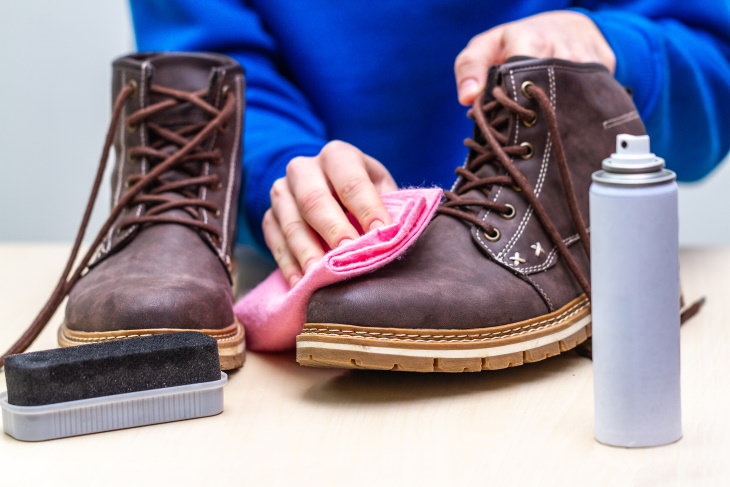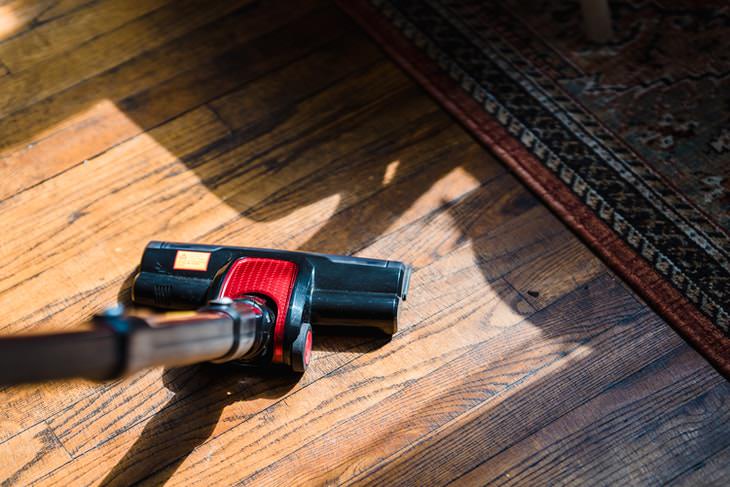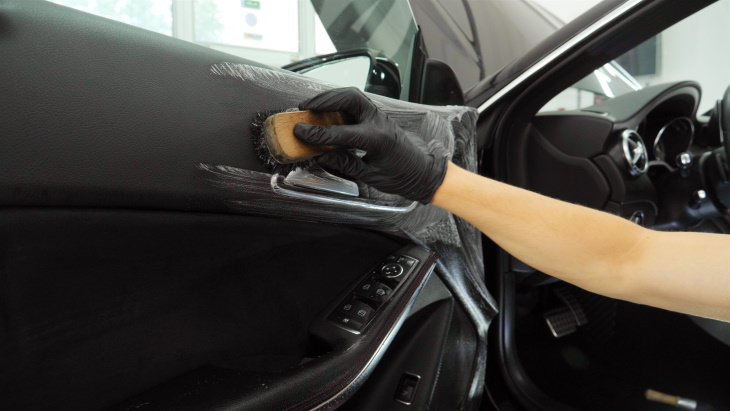

Deodorant stains, sweat stains on hats and sportswear, as well as white stains on swimsuits or winter outerwear are all caused by salt. Before cleaning an article of clothing that has a salt stain on it, make sure that the item is washable. If the care label says that the garment is ‘dry-clean only,’ it should be treated by a professional. If the garment is safe to clean at home, proceed as follows:
1. Fresh stains should be thoroughly rinsed in cold water. Set salt stains, on the other hand, require some soaking. Start by brushing off any salt residue with a dry soft-bristled brush or old toothbrush, and then proceed to soak the article of clothing in cold water overnight.
2. Launder the stained clothing item as usual, preferably on the cold water setting, and then let it air dry.
3. If you can still see the stain, mix 1 teaspoon of white vinegar in 1 cup of cool water in a small bowl. Dip one corner of a clean, dry cloth in this mixture and gently blot the stain. Then soak up the liquid with a dry corner of the same cloth.
4. Finish by washing the article of clothing again. This should remove any salt residue from the garment. If it does not, you can repeat steps three and four once more until the stain is completely gone.
Related Article: You Need To Know This! Shoe Care 101

Although all shoes can develop salt stains from sidewalk salt, leather and suede shoes are especially susceptible to salt damage because it dries them up. So when it comes to your leather shoes, protection is key. This can be done by applying a water-repelling lotion or spray on dry, clean shoes. If salt stains do occur, here’s a step-by-step guide to getting rid of them:
1. Wipe off any dirt or visible salt residue from the surface of the shoe with a dry cloth.
2. In a small container, combine 1 tablespoon of vinegar with 1 cup of cold water. Saturate the corner of a clean cloth with the mixture and use the cloth to gently wipe the surface of the shoe. In this process, think less is more, and avoid getting the shoes soaked, especially if they are made of leather, sheepskin, or suede. Oversaturating the shoe in water can cause warping, stains, or could ruin the finish of the footwear.
3. Air-dry the shoes in a well-ventilated area at room temperature. This may take a full day or more. But be patient and avoid placing the shoes near the central heating or any other direct source of heat because this can cause shrinkage. If the stain remains, repeat steps two and three.
4. Polish the shoes with a dry cloth. In the case of suede shoes, it’s advised to brush the shoes using a dedicated suede brush. This is also the time to apply any care products like a leather conditioner or a water-resistant spray.

When it comes to any type of flooring - hardwood, tile, or carpet - it’s always better to prevent salt stains than having to remove them. This is because salt can scratch and damage the flooring. With the exception of outdoor tiles on your patio or yard, prevention is easily achievable by keeping your slush-covered shoes outside. If this isn’t possible, however, you can use the following tips to remove salt stains from hardwood and tile:
1. Start by vacuuming up all the salt from the floor and wait for the floor to dry completely before you begin.
2. In a spray bottle, combine 2 tablespoons vinegar with 2 cups of water. Spritz the mixture onto the stained surface. Avoid saturating hardwood floors, as too much moisture could damage them.
3. Let the solution work for 5-10 minutes and then proceed by mopping the area.
4. If any bits of salt remain, dampen a clean cloth with the mixture and gently rub the stained areas. Wait for 5 more minutes and then rinse the area clean using a damp cloth.
5. Finish by wiping the area dry using an old towel or dry cloth.
Note: avoid using this method on stone floors because vinegar can lead to irreversible etching on stone.

If you notice a salt stain on a carpet, you need to act fast and clean up the mess as soon as possible. Otherwise, you’re risking permanent discoloration, and this, if at all, can only be remedied by calling a professional. So don’t waste time and follow these steps.
1. Start by loosening up any debris with a soft brush. Then vacuum up any loose salt crystals from the stained area.
2. Combine ½ cup cold water and ½ cup vinegar in a spray bottle. Spray it onto the stain and allow the vinegar to dissolve the salt for 5-10 minutes.
3. Pt-dry the stained area with a dry cloth and let the carpet dry. If needed, repeat the vinegar treatment again until the stain is completely lifted.
4. Once the carpet is dry and clean, vacuum it once again to restore the fluffy finish.
Related Article: How to Keep Your Carpet Looking Clean and New!
